12 Inspiring Travel Challenges (For Each Month of the Year)
Are you up for a travel challenge? How about twelve?
In this article, you’ll find 12 inspiring travel challenges, one for each month of the year.
So, let’s play a game:
Let’s make travel a bit more interesting than just checking attractions off a bucket list. And let’s concentrate on the experiences and the lessons learned, not the places we see when we travel.
If you’re ready to take your travels to the next level, this is my suggested travel challenges list for you.
Let’s conquer!
1. January: Riding the Last Narrow-Gauge Train in Bulgaria

📝 Travel Challenge Description
To start the travel challenges list, I have an unusual train journey for you.
You see, narrow-gauge trains are a rare species. The 760-mm (30-in) wide rails aren’t used much anymore.
In Bulgaria, there’s just one line left, which runs on narrow rails. This is the track from Septemvri to Dobrinishte. It cuts through the magical Rhodope Mountains and the proud Pirin Mountain.
📍 Where to Go for this Travel Challenge
The most picturesque and awe-inspiring section of the journey is between the SPA Capital of the Balkans, Velingrad, and the highest train station on the Balkans, Avramovo.
Riding the narrow-gauge train is like time-machine travel.
The line was constructed between the 1920s and the 1940s. It seems like time has stopped in the villages whose train stations you pass. The ride is the most authentic glimpse into the lives of the people from the surrounding mountains.
✅ How to Conquer This Travel Challenge
Buy your ticket at Velingrad Central train station. It costs BGN2.60 (€1.30 / $1.50). You can also catch the train at Velingrad-South train station. There’s no office at this station, so you need to buy the ticket on the train.
After one hour, several 8-shaped serpentines, and tens of tunnels, the train will arrive in Avramovo. The ride back leaves in an hour. Alternatively, you can take a taxi from Velingrad to Avramovo and ride the train just in one direction.
The narrow-gauge train runs several times a day. You can check the current timetable at any of the train stations.
📆 Why You Should Do it in January
In January, winter is in its peak. The season’s fluffy, white duvet covers the mountains and they look surreal.
The cold weather also adds an extra level of difficulty to your travel challenge. Getting your hiney a bit cold is a challenge you’re up to, right?
2. February: Walking Trunk in Hand With an Elephant Lady in South Africa
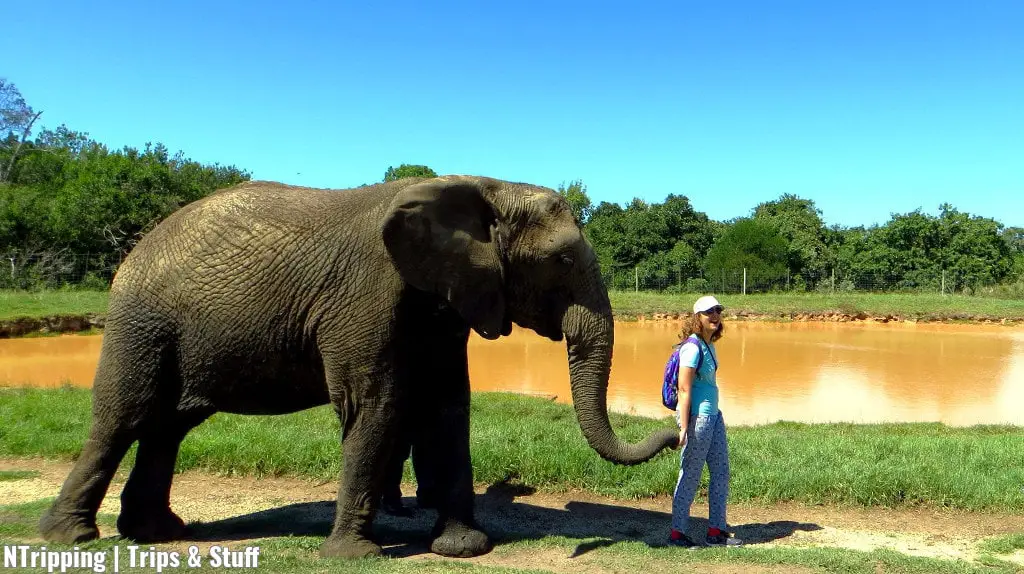
📝 Travel Challenge Description
I couldn’t create a travel challenges list and skip an animal encounter. So, here we go:
Walking “trunk in hand” is the alternative to walking hand in hand with your buddy. Only in this travel challenge, your buddy is an elephant lady. She puts her trunk in your hand and the two of you go for a walk.
📍 Where to Go for this Travel Challenge
The Elephant Sanctuary near Plettenberg Bay on the Garden Route is home to rescued elephants. You should put it on your South Africa itinerary!
These South African animals were saved either from illegal private zoos or from the wild. They have been mistreated or suffered an injury. Into the wild, they can’t make it on their own. In the sanctuary, they learn to live with each other and to take care of themselves.
For example, the lady on the photo above lost the tip of her trunk. This meant that she would starve to death as her trunk serves as a multi-purpose tool.
One of the functions of her trunk is to pick up food and place it in her mouth. With her severed trunk, she was unable to do so. In the sanctuary, she learned how to suck in objects instead of picking them up. Now, she’s able to feed without extra help.
✅ How to Conquer This Travel Challenge
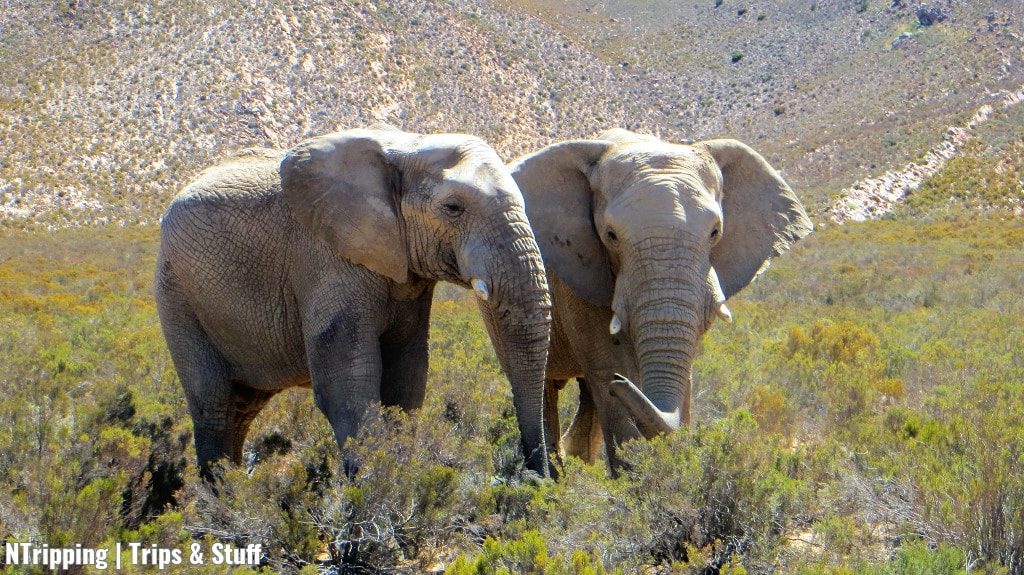
One thing I noticed in the sanctuary is this:
People are afraid of elephants. Well, they should be! The giant mammals have unpredictable behaviour. They might vandalise an entire forest just for the fun of it.
Standing near a one-tonne-heavy bully with the size of a small house is indeed scary. However, if you overcome your fear, you’ll end up with one of the most amazing travel experiences of your life!
Simply hold your hand with the palm facing up and your elephant friend will place her trunk in it. Then, you’ll start walking and she’ll follow you. It sounds so simple, but it’s the most extraordinary experience on this travel challenges list.
📆 Why You Should Do it in February
February is the shoulder season in South Africa. There aren’t many tourists around and you wouldn’t have to wait long in line until your turn to walk trunk in hand with your new elephant friend comes.
3. March: Exploring a Snapshot of the Past in Italy
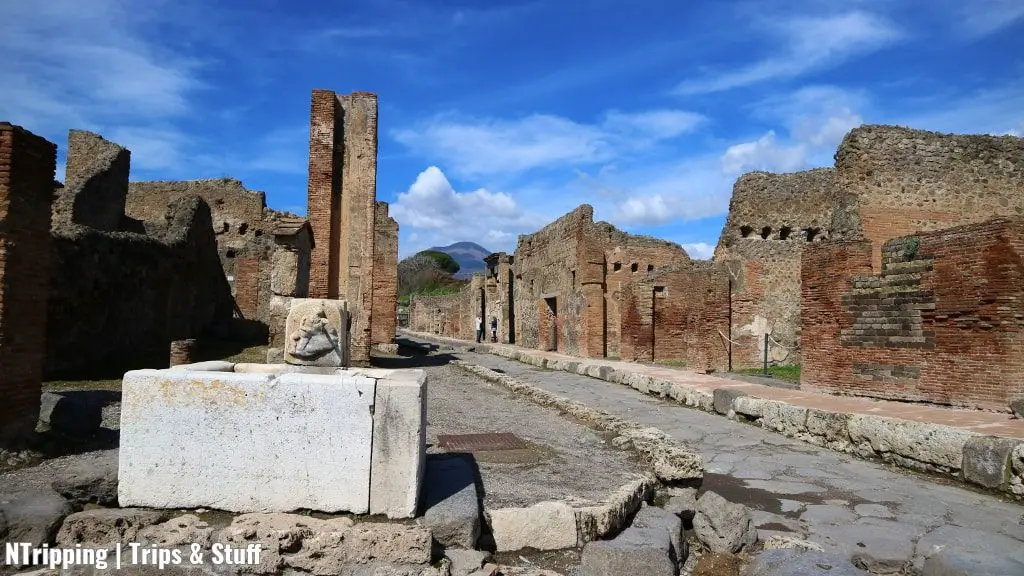
📝 Travel Challenge Description
Next on the travel challenges list, we have ancient ruins and a mighty volcano. But that’s not all.
Usually, when you visit ancient ruins, you see what time has done to a city. Stones have fallen down, walls have been demolished, and you can’t fully imagine the grandeur of the place.
But when you visit Pompeii, you’ll notice that it wasn’t time that destroyed the city.
It was one single act of violence from nature – the eruption of the nearby Vesuvius Volcano – which wiped off all living creatures from the city.
In a matter of seconds, life in Pompeii ceased to exist. However, the buildings, the streets, and the interiors survived the disaster. Buried under a thick layer of ashes, the city of Pompeii kept most of its original appearance from the 1st century AD. Once archaeologists removed the ashes, they uncovered an almost untouched “snapshot of the past”.
📍 Where to Go for this Travel Challenge
The archaeological site of Pompeii lies near Naples, Italy. You can reach it easily by train, car, or bus.
You can admire the threatening sight of the active volcano from a distance or visit it after you’ve seen what it was capable of doing.
✅ How to Conquer This Travel Challenge
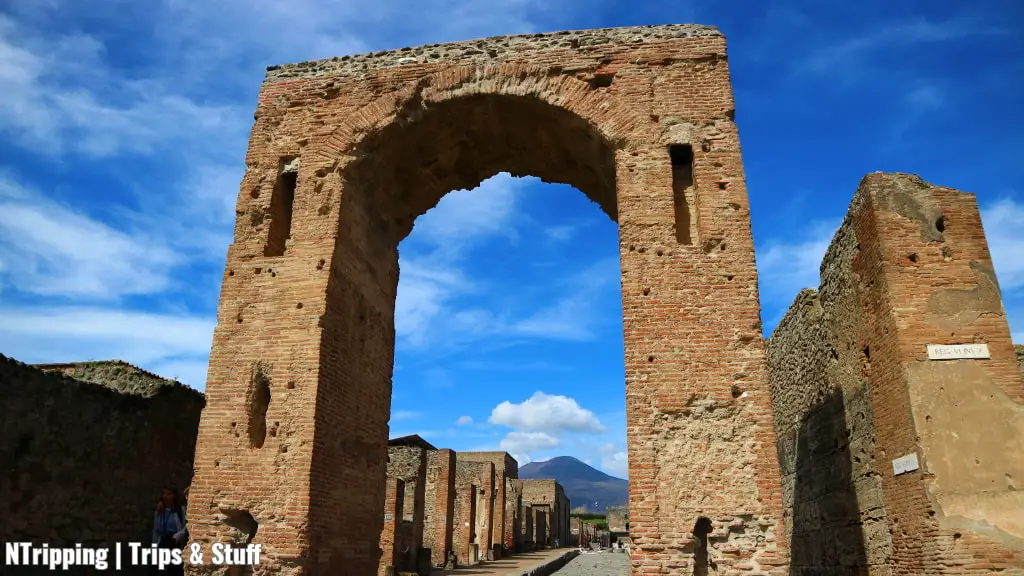
Wear sturdy shoes if you decide to visit Pompeii. The cobble-stoned streets and the ruins of the city have uneven surfaces.
Moreover, if you also climb Vesuvius, you need to do a short but steep hike up the side of the volcano. The trail is covered in slippery stones and volcano ashes.
📆 Why You Should Do it in March
As you might imagine, Italy receive hordes of tourists each year.
Luckily, the weather in March is still a bit cold for most travelers who want to spend a day outside, roaming the ruins of an ancient city. This is your chance to walk alone the back alleys of Pompeii.
4. April: Discovering Unexpected Attractions in Paris

📝 Travel Challenge Description
Let’s mix things up. Why not add one of the most visited city in the world on the travel challenges list.
You might be wondering already, what unexpected attractions can Paris possibly hide?
Surprisingly, even the most popular attractions keep unexpected secrets. For example, when you hear the Louvre, in your head certainly pops up the image of Mona Lisa.
But if you check the map of Louvre’s collections, you’ll discover that there are tonnes of equally exciting artefacts to explore in the largest museum in the world.
📍 Where to Go for this Travel Challenge
So, where can you find unusual things to do in Paris? You see, even the most famous museums hide surprising treasures.
Here’s a short but sexy list to inspire your search for crazy things to do in Paris:
- The Louvre: Find peculiar collections and marvel at the interior of the former palace.
- Graveyards: Pay respect to some of the greatest talents of the past in the Parisian cemeteries.
- The Eiffel Tower: Spy on Gustave Eiffel’s secret private apartment.
- Parks: Play with sailboats in the royal ponds.
- Cabarets: Discover the best of the Parisian nightlife.
✅ How to Conquer This Travel Challenge
My best advice for Paris is to limit your stay to exactly three days.
Why only 3 days in Paris, when there’s so much to see and do in the French capital?
Because if you stay longer, you’ll start seeing the imperfections of the large city with hordes of tourists even in low season. Because if you stay longer, you’ll push yourself to see more than your mind can take and walk further than your feet can carry you.
Moreover, because if you stay longer, you might not want to return. And Paris is not a place to visit just once in your lifetime and never return to!
📆 Why You Should Do it in April
To avoid at least some of the tourist crowds, come in low season. Autumn and early spring is the best time.
In April, the temperatures are pleasant for long strolls along the Seine River. The trees are turning green and the parks look lovely.
5. May: Finding Secluded Paradise in the Dominican Republic
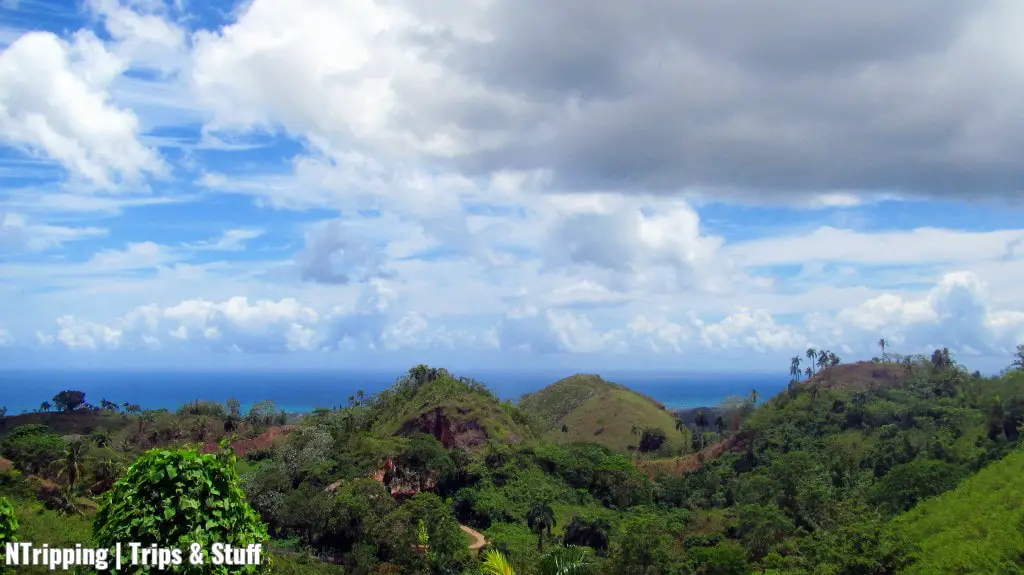
📝 Travel Challenge Description
Despite being best-known as an all-inclusive destination, the Dominican Republic still hides countless secluded beaches and unexplored jungles.
📍 Where to Go for this Travel Challenge
For the next item on the travel challenges list, we’re going to the Caribbean island.
You can find seclusion on empty Dominican beaches.
You can descend into the depths of the Earth in one of the largest limestone caves in the area.
Or you can explore the last secret gem of the Caribbean, Samana Peninsula.
✅ How to Conquer This Travel Challenge
The first step is to get away from all-inclusive resorts. Don’t be afraid to explore the vibrant Dominican Republic and search for its hidden gems. Be prepared and open-minded and you’ll end up with wonderful memories.
Ready for an adventure? Then, read these Dominican Republic travel tips to learn how to best explore safe and hassle-free.
📆 Why You Should Do it in May
You want to avoid visiting the island republic during the hurricane season. During the rest of the year, the weather is great for sunbathing and exploring the tropical paradise.
The months from December to April are the best time to visit the Dominican Republic. That’s why my recommendation is to pick May – shortly after the crowds have left – for your adventure in the tropical paradise.
6. June: Conquering Europe’s Deepest Canyon on a Raft
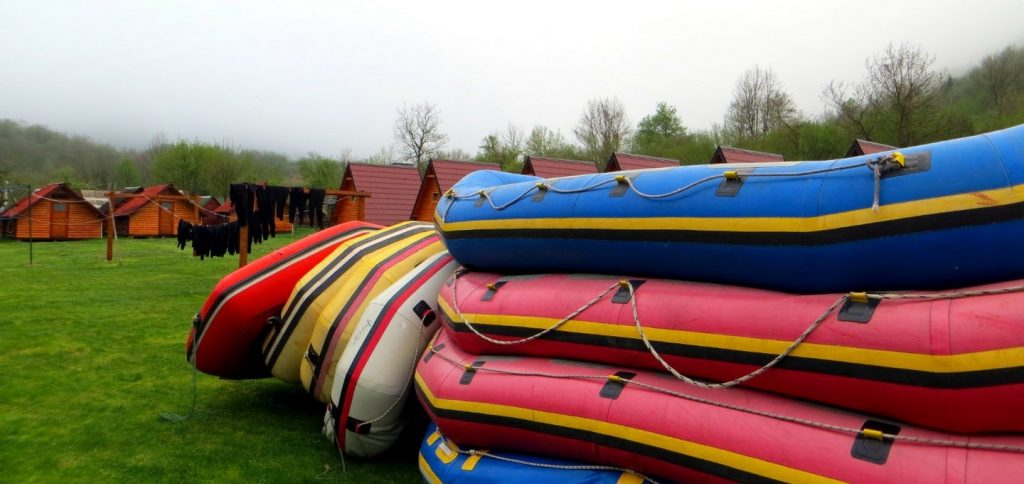
📝 Travel Challenge Description
In the mountains of Bosnia and Herzegovina, runs the Tara River.
Known as the Colorado of the Balkans, the river has carved a fascinating canyon. It’s deeper than any other in Europe. For comparison, the Grand Canyon is only slightly superior to this one.
📍 Where to Go for this Travel Challenge
Between the Bosnian town of Foca and the border with Montenegro, you can raise your adrenaline in a surreal white-water rafting adventure in the deepest European canyon.
✅ How to Conquer This Travel Challenge
The turquoise waters of the Tara River canyon invite you to jump right in. You should be careful, though. The crystal waters might seem shallow, but the river between 2 and 4 m (6.56 ft. and 13.12 ft.) deep!
Take part in a rafting adventure, organized by the skilful tour companies in the area. You can find small camps at the riverbanks along the road.
📆 Why You Should Do it in June
The neoprene suits provided by the rafting companies protect you from the refreshing waters of the river. However, once you come on shore, you need to shower and dry yourself.
Trust me, it’s not pleasant to do so when the temperatures are below 10°C (50°F). However, in the peak of summer, you risk being eaten alive by mosquitoes.
This leaves June as the perfect month to indulge in this unforgettable rafting adventure.
7. July: Dancing the Night Away at the Black Sea Coast
📝 Travel Challenge Description
The next one on the travel challenges list is for the most hard-core and open-minded travellers.
You see, Bulgarian folk dances are also known as the Eighth Miracle. That’s how fascinating line dancing in Bulgaria is! And once you’ve tried it and you’ve mastered the steps, you won’t stop until you can no longer stand on your feet.
📍 Where to Go for this Travel Challenge
Visit the small villages at the Northern Bulgarian Black Sea Coast. Stay at an authentic, rustic guesthouse and make friends with the other visitors.
✅ How to Conquer This Travel Challenge
There are just three easy steps to conquering this travel challenge:
- Stay at a traditional guesthouse.
- Make friends with everyone around you.
- Join the dances when the music starts.
📆 Why You Should Do it in July
For this travel challenge, I recommend July for two reasons:
- It is summer and you can combine the dances with suntanning at some of the best Bulgarian beaches or enjoy sea kayaking around the rugged cliffs.
- If you arrive on the last day of June, you can witness the traditional July Morning festivities. They are a joyful celebration of new beginnings and positive thinking.
8. August: Surviving and Making Friends at The Roof of the World
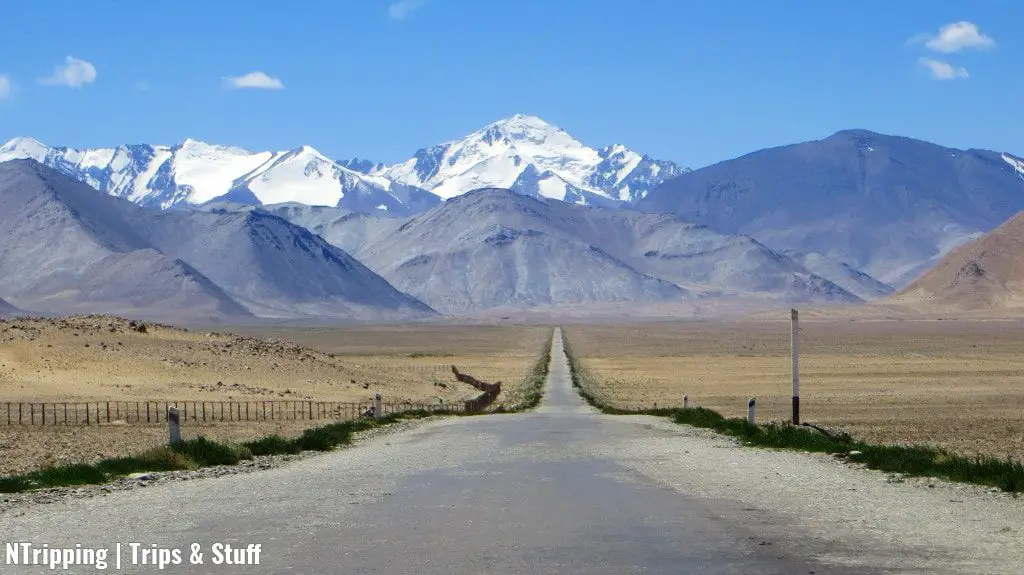
📝 Travel Challenge Description
The Pamir Mountains in Central Asia, aka The Roof of the World, is a place of extremes.
Nothing grows on this Alpine desert at the altitudes of over 4,000 m (13,000 ft.). Inaccessible peaks rise twice as high. Streams might freeze even in mid-August. In winter, the temperatures might drop lower than in Siberia and Alaska.
However, despite the harsh living conditions and possible language barriers, you meet some of the friendliest and kindest people in the world.
They invite you to their homes, share the little food they have, and most importantly tell you about their lives, dreams, and desires. You make friends for life and experience diverse cultures, which you can’t meet anywhere else on the planet.
📍 Where to Go for this Travel Challenge
To conquer the next item on the travel challenges list, go to the Pamirs. You’ll need to reach the ex-Soviet republics of Tajikistan and Kyrgyzstan.
Getting to their capital cities is quite convenient. For Kyrgyzstan, most travellers don’t need visas. For Tajikistan, you can apply for an e-visa. When visiting the Pamirs, don’t forget to request a GBAO permit as well.
✅ How to Conquer This Travel Challenge
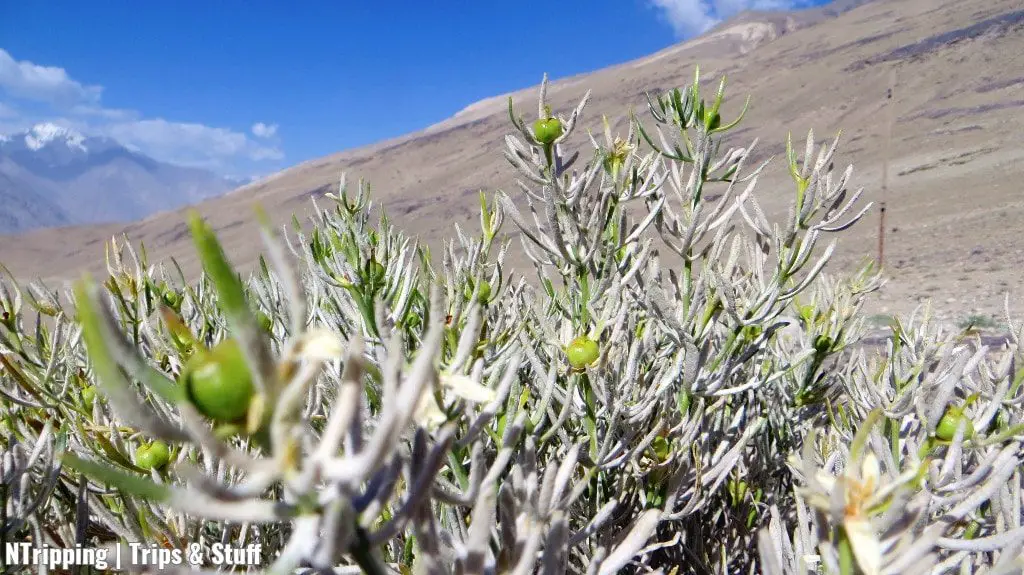
You can drive, cycle, or even hitchhike the Pamir Highway. Take the road from Dushanbe (the Tajik capital) to Osh (the second-largest city in Kyrgyzstan) or vice versa. You’ll be most flexible and safe with a guide and a driver.
Governments – past and present – have long forgotten the area in the two neighbouring ex-Soviet republics. The few roads, which were once paved, have more potholes than asphalt left.
The so-called Pamir Highway can hardly qualify as a speedway in any modern country. Instead, dusty roads take you to small villages without running water and electricity.
But if you’re up for a life-changing travel experience, this is your destination! Pack light and warm, take your biggest smile and the friendliest attitude you’ve got, and you’ll end up with unbelievable stories to tell your grandchildren.
📆 Why You Should Do it in August
August is the driest month of the year in the Pamir Mountains.
This is extremely important because even a few raindrops can cause landslides and roadblocks, preventing you from having an adventure of a lifetime.
9. September: Greeting the Sun over the Rock Forest Meteora

📝 Travel Challenge Description
Have you ever visited a place, which exceeded the boundaries of your imagination? For me, one such place was the Rock Forest of Meteora, Greece.
The high-rising boulders, topped with levitating monasteries, form an incredible image. Nature and the human spirit have created scenery like no other.
📍 Where to Go for this Travel Challenge
Perched atop the cliffs, the Meteora Monasteries near Kalambaka in Central Greece welcome visitors all year round.
Follow the 7-km (4.3-mi) long scenic road to admire the surreal views of the rocks and the monasteries around you.
✅ How to Conquer This Travel Challenge
There are just four steps to conquering this unforgettable travel challenge:
- Get up early. Use an app or ask the locals about the time of the sunrise. Dress warm, even in summer. The wind can be fierce. After all, it carved these mesmerising rock formations.
- Drive to the Meteora Rocks. Try to arrive about half an hour before dawn. There are several designated areas where you can position yourself and meet the new day.
- Greet the first sunrays. As they hit the rocks, their reflections paint the cliffs in gentle pink colours.
- Move on to the Great Meteoron Monastery. Listen to the sound of the bells calling for prayer.
📆 Why You Should Do it in September
The temperatures at the end of the European summer are more pleasant than at its zenith. However, they’re still quite high – and you need them to be over 20°C (68°F).
That’s because the winds, which have shaped the Meteora Rock Formations, still blow harshly. After all, if you get up in the middle of the night to greet the sun, you’d want to feel at least some comfort.
10. October: Tasting Exquisite Slow-Food Delicacies in Ireland

📝 Travel Challenge Description
Next on the travel challenges list is a culinary experience.
You know how we’ve become obsessed with time and getting things done quickly? Even when we eat, most of us prefer the so-called “fast food” to save some extra minutes.
However, that’s not only unhealthy but it’s unpleasant and boring. Food should be devoured slowly, each bite should be enjoyed, and each aftertaste should be appreciated.
That’s what the slow food culture is all about. Taking time to make a perfect dish and then savouring each moment while devouring it.
📍 Where to Go for this Travel Challenge
The Beara Peninsula in Ireland, albeit not as famous as other regions of the island, is home to local producers who keep ancient recipes. They take the time and effort to produce delicacies, which will make your palate cry with joy.
✅ How to Conquer This Travel Challenge
These are some of the places where you can devour Beara’s exquisite treats:
- The award-winning seafood chowder at the Beara Coast Hotel.
- The Beara Ocean gin with water from the Atlantic Ocean at the Beara Distillery.
- The Irish farmhouse raw-milk cheese at the Milleens Cheese.
- Locally farmed mussels at the Kush Shellfish Restaurant.
📆 Why You Should Do it in October
There’s something magical about the countless shades of green in Ireland. Combined with the radiant autumn foliage of the trees in October, you’ll experience more colours than your eyes can distinguish.
Check also this 7 days Ireland road trip itinerary to make sure you don’t miss the most magical spots on the Emerald Island.
11. November: Chasing the Last Summer Days on the Best Cyprus Beaches
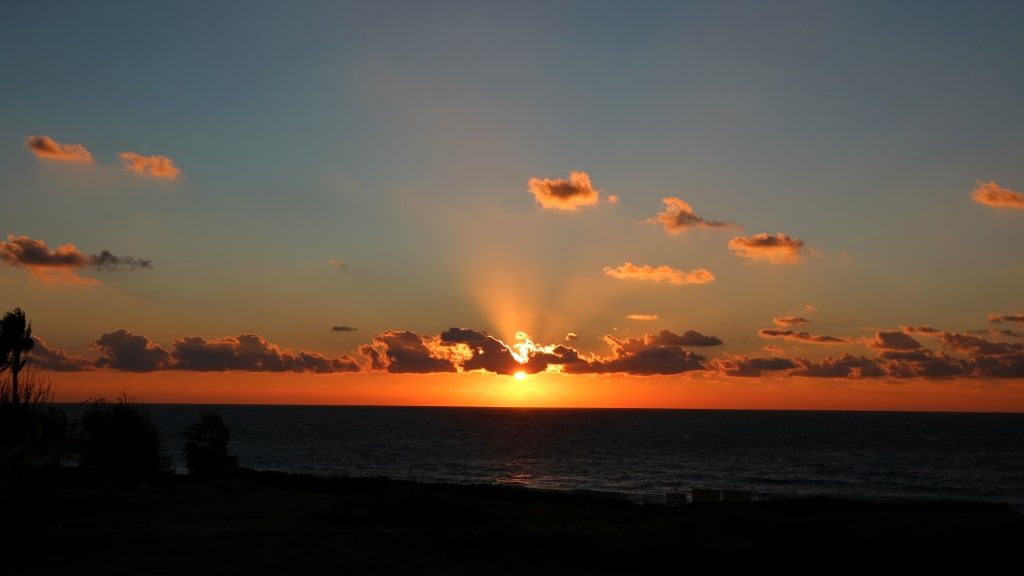
📝 Travel Challenge Description
Cyprus has the longest summer season in Europe. The island is also home to ancient ruins, stunning beaches, and incredible sunsets.
Arm yourself with your best camera and explore the beaches waiting for the perfect sunset.
📍 Where to Go for this Travel Challenge
The Cypriot coastline is predominantly rocky with rugged cliffs rising up like scary guardians. The Mediterranean Sea and the harsh winds have sculptured jaw-dropping arcs and bottomless caves.
Nevertheless, if you know where to search, you’ll find amazing beaches to work on your tan as well.
✅ How to Conquer This Travel Challenge
To check this item off your travel challenges list, follow these steps:
- Check the map and visit as many of the numerous Cyprus beaches as possible.
- Suntan and stock on vitamin D whenever the temperatures allow it.
- Explore the countless ancient ruins on the Mediterranean island when not on the beach.
📆 Why You Should Do it in November
As with other popular destinations, it’s key to visit Cyprus when the crowds have already left. Moreover, you should do it before winter. The winds, which have shaped the rugged coastline, are fierce.
Hence, November is your last chance before spring to sunbathe or even swim anywhere in Europe. Bring your swim trunks and a quick-drying tower to conquer this travel challenge.
12. December: Uncovering the True Spirit of Christmas
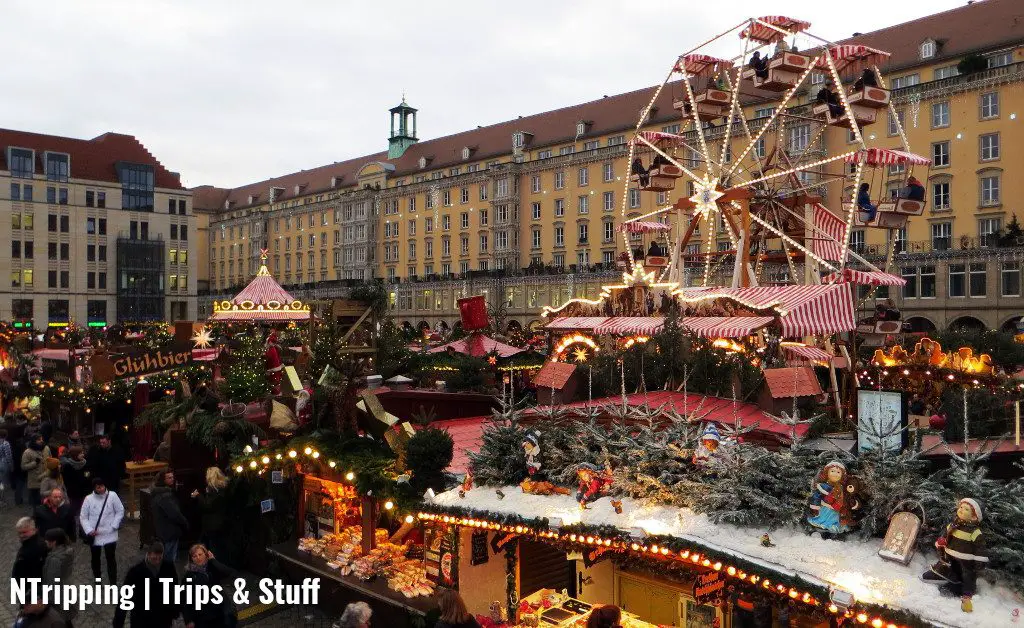
📝 Travel Challenge Description
In my humble opinion, the true spirit of Christmas doesn’t come from exchanging expensive presents with your loved ones but from spending precious time with them.
In the dull, winter days, what better place to spend a few hours and enjoy the bright decorations than a German Christmas Market!
📍 Where to Go for this Travel Challenge
Germany is home to some of the oldest and most joyful Christmas traditions in the world.
Every square in every town, every castle or fortress, every farm and every community organize their own Christmas market. Although the size and splendour can vary greatly, there are fun things to do and nice memories to make at every Christmas market.
Still, the most famous Christmas markets in Germany are in the following cities:
- Berlin,
- Cologne,
- Dortmund,
- Dresden,
- Dusseldorf,
- Frankfurt,
- Munich,
- Nuremberg.
✅ How to Conquer This Travel Challenge

For the best possible results, go on a Christmas market hopping tour!
Either in a German city you’re visiting, or through a larger area, don’t limit yourself to just one German Christmas market. The magic is in the variety and the different themes of the markets.
📆 Why You Should Do it in December
You might think this is a trick question. However, some of the most popular German Christmas Markets open in late November and close before Christmas.
Crazy, eh? Joke aside, December is the only time of the year you can actually tick this item off your travel challenges list.
Which Travel Challenges Will You Do Next?
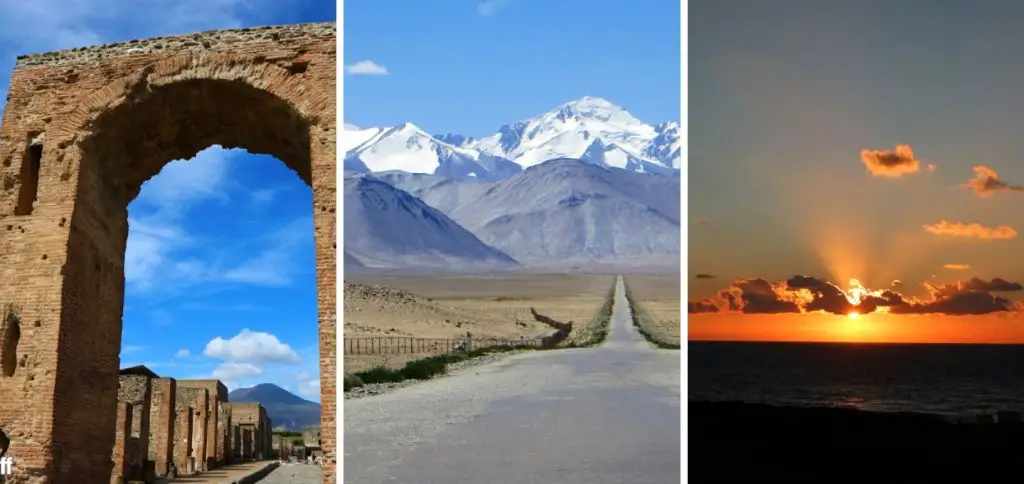
There are no winners at this game. There are no prizes either. Only countless memories and good friends you make along the way.
But isn’t this what travel is all about?
I hope you’ll enjoy all of the travel challenges on this list. And use the next 12 months to finish them.
Then, create your own travel challenges list!
Just don’t forget to share which travel challenges are your favourites.

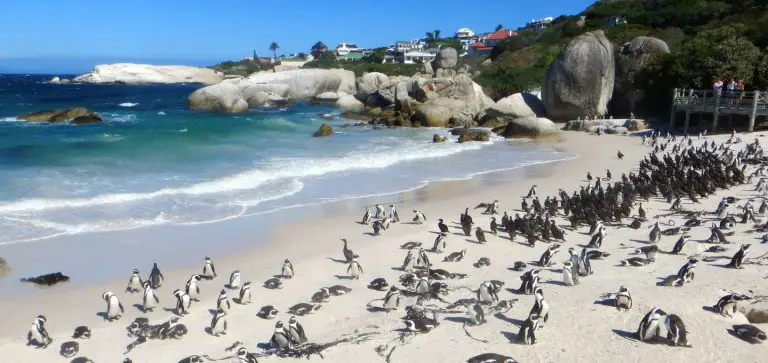

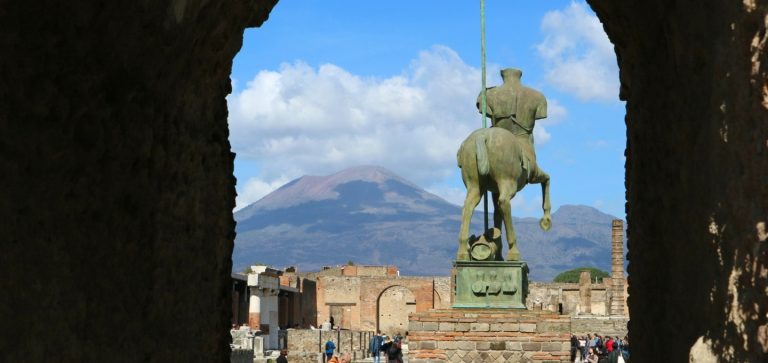
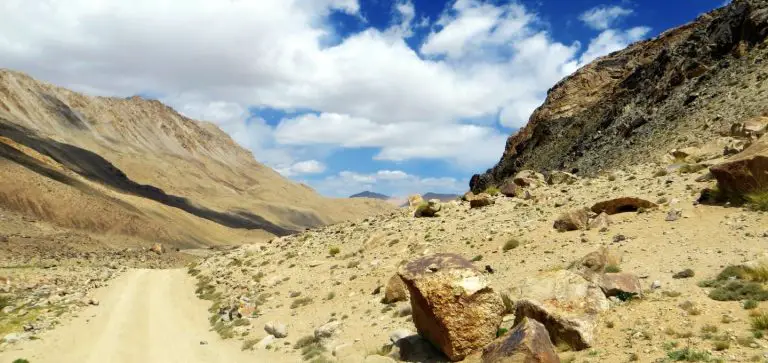
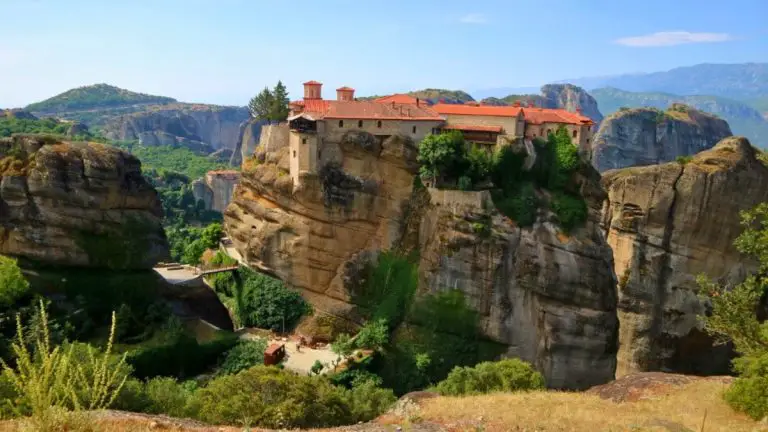

One Comment